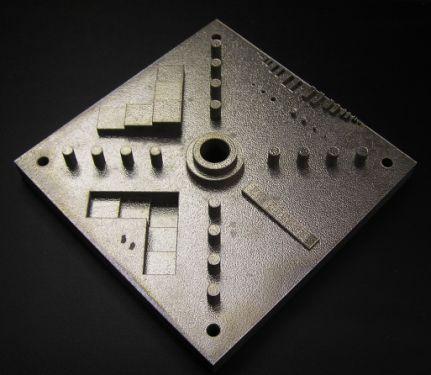
Congress established the agency to bring the US up to snuff in measurement infrastructure with the United Kingdom, Germany, and other economic rivals of the time. Now NIST-generated measurements support technologies from the nanoscale to enormous and complex projects like earthquake-resistant skyscrapers and wide-body jetliners.
Now the manufacturing researchers at NIST have created a set of guidelines for powder bed, metal 3D printing fusion processes they say identifies key unknowns in the additive manufacturing process in the hope they can help make those methods capable of being fine-tuned automatically.
The report systematically links process inputs to in-process phenomena that might either be measured or modeled to quantify part quality from material characteristics and dimensional accuracy to surface roughness.
The powder bed fusion process generally uses a laser to selectively heat and fuse a thin layer of metal particles within a bed of metal powder.
As it’s of critical importance to aerospace and automotive manufacturers to further develop metal printing capability, the NIST report is aimed at helping to promote advances in process control and reliability.
NIST says powder bed fusion of metal parts is “beset by system performance and reliability issues that can undermine part quality, problems shared by other additive manufacturing methods.” They say problems like dimensional and form errors, voids in fused layers, high residual stress in finalized parts, and poorly understood material properties including hardness and strength are holding back the process.
The NIST researchers are hoping their work results in process controls through in-process sensing and real-time control which will ultimately help prevent or correct such issues. Their work is aimed at reaching a detailed understanding of the intricacies of powder bed fusion and the more than 50 factors they say influence the melting process alone.
The NIST research team broke the method down into a dozen “process parameters,” 15 types of “process signatures” and the half a dozen categories of “product qualities” they charted to identify the “cause-and-effect relationships among variables” in each of the three categories.
Mechanical engineer Dr. Brandon Lane of the NIST, one of the report’s authors, says, “This cause-and-effect breakout can guide research to develop measurement and sensing capabilities as well as modeling and simulation tools—all with the aim of enabling better process control.”
Next up, the NIST research team say they plan to build an additive manufacturing test bed for evaluating in-process measurement and control methods to enable them to observe melting and solidification of metal powders, integrate process metrology tools, and implement software interfaces and data acquisition for process measurements and test control algorithms.
The report, Measurement Science Needs for Real-time Control of Additive Manufacturing Powder Bed Fusion Processes, is available here or you can download the full report here.
Will you be able to make use of this report from the NIST on metal powder bed 3D printing processes? Let us know in the Additive Manufacturing Powder Report forum thread on 3DPB.com.